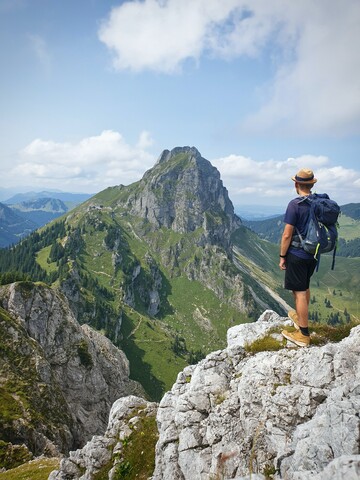What are the different types of rocks?

Rocks are formed from the Earth's crust, and they can be classified into different types based on their composition and origin.

Rocks are formed from the Earth's crust, and they can be classified into different types based on their composition and origin.
There are actually three different types of rocks, and each one is formed in a different way.
Igneous Rocks
Igneous rocks are formed when magma or lava cools and hardens. Magma is hot, molten rock that forms deep inside the Earth. Lava is magma that has erupted from a volcano and cooled on the surface of the Earth.
Some common examples of igneous rocks are granite, basalt, and pumice. Granite is a hard, strong rock that is often used in construction. Basalt is a dark, heavy rock that is found in many places around the world. Pumice is a light, porous rock that is often used to make abrasives.
Sedimentary Rocks
Sedimentary rocks are formed from the remains of other rocks, plants, or animals. Over time, these remains are broken down into small pieces and then deposited in layers. As more and more layers are deposited, the pressure and heat from the Earth's crust causes the layers to solidify into rock.
Some common examples of sedimentary rocks are sandstone, shale, and limestone. Sandstone is made up of small grains of sand that have been cemented together. Shale is made up of very fine-grained mud that has been compacted. Limestone is made up of the remains of tiny sea creatures.
Metamorphic Rocks
Metamorphic rocks are formed when existing rocks are changed by heat and pressure. The heat and pressure can come from deep inside the Earth or from the movement of tectonic plates.
Some common examples of metamorphic rocks are marble, slate, and gneiss. Marble is formed when limestone is subjected to heat and pressure. Slate is formed when shale is subjected to heat and pressure. Gneiss is formed when granite is subjected to heat and pressure.
Those are the three different types of rocks.
- The rock cycle is the process by which rocks are constantly changing from one type to another.
- Rocks can be used for many different purposes, such as building materials, jewelry, and even fuel.
- The study of rocks is called geology.
What are the different types of earthquakes?
There are different types of earthquakes, and they can happen for different reasons. One type is called a tectonic earthquake. These earthquakes happen when the Earth's tectonic plates, which are like giant puzzle pieces, move and grind against each other. This can cause the ground to shake and sometimes even make buildings and bridges crack! Another type of earthquake is called a volcanic earthquake. These earthquakes happen when there is an eruption from a volcano. The lava and gases coming out of the volcano can make the ground shake and rumble. One example of a volcanic earthquake is when the volcano Mount St. Helens erupted in 1980 and caused a big earthquake.
What are the different types of minerals?
Minerals are natural substances found in rocks and soil. There are many different types of minerals, each with its own special characteristics. One type of mineral is quartz. Quartz is a clear or colored mineral that is very hard and can be used to make jewelry. Another type of mineral is calcite. Calcite is a colorful mineral that can be found in caves and is sometimes used to make beautiful decorations. One more type of mineral is feldspar. Feldspar is a mineral that is often found in granite and can have different colors like pink, gray, or even white!
What are the different types of volcanoes?
Volcanoes can come in different shapes and sizes. One type of volcano is called a shield volcano. Shield volcanoes are wide and flat, like a shield, and are formed by many layers of lava that flow out slowly. Another type of volcano is called a cinder cone volcano. These volcanoes are steep and small with a little crater at the top. They are formed by explosions that shoot pieces of lava, rocks, and ash up into the air! One example of a cinder cone volcano is the famous Paricutin volcano in Mexico. It started from a small crack in a farmer's field and grew to be a big volcano!
What are the most common elements found in rocks and soils?
Rocks and soils are made up of different elements, but there are a few that are very common. One common element is oxygen. Oxygen is a gas that makes up a big part of the air we breathe. It is also found in rocks and soils. Another common element is silicon. Silicon is a hard and shiny element that is found in rocks like quartz and granite. It is also used to make computer chips! Calcium is another common element found in rocks and soils. Calcium is important for our bones and teeth, and it is also found in minerals like limestone.

Rocks are formed from the Earth's crust, and they can be classified into different types based on their composition and origin.